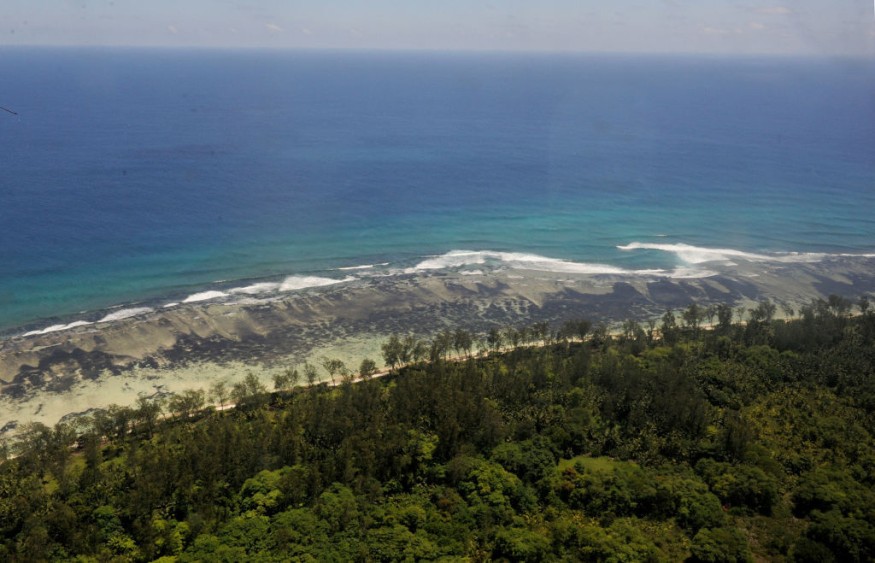
Experts warned that low-lying islands are at risk because of the rising sea levels due to climate change.
A study said that recent assessments of future risk to atoll habitability have focused on island erosion and submergence, and have overlooked the effects of other climate‐related drivers, as well as differences between ocean basins and island types.
Researchers have investigated the cumulative risk arising from multiple drivers such as sea‐level rise; changes in rainfall, ocean-atmosphere oscillations and tropical cyclone intensity; and ocean warming and acidification.
They said that risk levels would vary significantly between urban islands, depending on geomorphology and local shoreline disturbances.
Risk Levels
Rural islands are seen to experience less contrasting risk levels, but higher risks than urban islands in the second half of the century.
Researchers said that a million people live in coral atolls like those in the Maldives, Tuvalu, Kiribati, and the Marshall Islands. These islands are just a few feet in elevation and this characteristic makes them some of the places that are considered to be most at-risk from the rising seas that will result from climate change.
They disclosed that five uninhabited islands in the Solomon Islands have already vanished beneath the waves in the past century.
On the other hand, the Maldives, Kiribati, Tuvalu, and the Marshall Islands have the highest percentage of their land area at risk because they are all atolls or a ring-shaped coral reef, island, or series of islets.
Other countries also have low lying islands, but they have a higher ground available to flee to.
Experts explained that these atoll islands are among the most sensitive to the effects of climate change, with sea-level rise and potentially increasing storminess expected to make coastal flooding events more frequent and intense.
On the other hand, when waves overwash such islands during extreme weather events, new sediment from their surrounding coral reefs is typically deposited on the island that will later increase its elevation.
Researchers said that the hugely disruptive and potentially life-threatening extreme weather events may actually be required for the long-term survival of atoll islands and their communities.
Still, the sediment required to make this happen is derived from coral reefs, which are also under threat from climate change.
Experts said that while the damage to coral reefs may actually benefit atoll islands with increased coral detritus over the next ten years, the long-term damage to the coral reef ecosystem, over the coming decades, will leave atoll islands without enough sediment to naturally adapt to sea-level rise.
Read Also: Small Island Nations May Vanish From the Map Due to Rising Sea Levels Caused by Climate Crisis
Uninhabitable
According to experts, the islands do not need to disappear to become uninhabitable.
They have explained that when waves roll over these low-lying islands, they contaminate fresh groundwater with salt.
They noted that higher seas would mean frequent floods and groundwater cannot recover from daily or even yearly inundation: food trees die and water must be imported.
Researchers previously analyzed flooding on Roi-Namur in the Marshall Islands.
It noted that most atoll islands will have no potable water by the 2060s if global climate goals are not met.
This could also happen by 2030s if ice sheets collapse under the "worst case scenario" for climate change. Due to this, thousands of Marshall Islande
Related Article : Artificial Taller Islands Could Save the Maldives from Imminent Sea Level Rise [Study]
© 2025 NatureWorldNews.com All rights reserved. Do not reproduce without permission.





